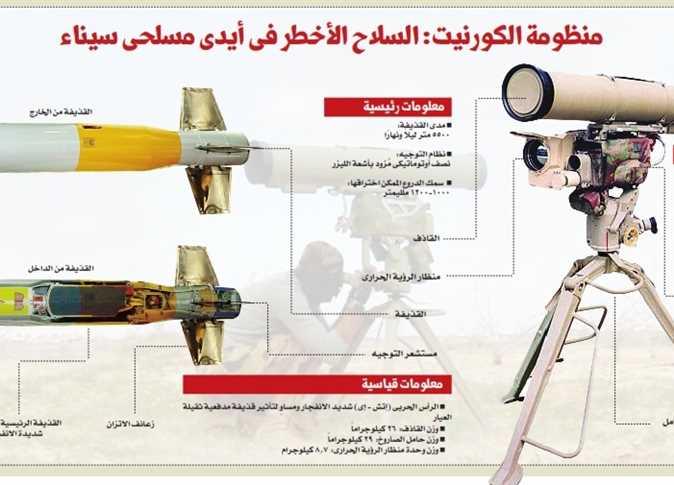The Russian Channel 1 revealed a video showing a unique experience of an updated air-to-air anti-drone Kornet missile, as we mentioned in a previous article. The new missile was launched from the Russian Orion-E drone, and it targeted an unmanned helicopter from a distance of 4 km. The experiment took place in the Crimea.
The new missile is a modification of the famous 9M133 Kornet surface-to-surface anti-tank missile, in the guidance and control system.

The difference between the two versions routing systems:
The land Kornet is directed by riding a laser beam (SACLOS pattern), the laser beam is fired at the target and the missile rides this beam and follows it until it hits the place where this laser beam fell, meaning the target must be illuminated by the laser by the launch pad itself.
While the Orion-E airborne drone is semi-active laser-guided, it shares with the ground-based cornett that both are illuminated by a laser for guidance, but a semi-active laser means that the target can be illuminated from any direction (a drone lights the target and a second drone hits the missile, It is possible from the ground to light the target and the drone hits the missile, with complete comfort, and the drone can throw and run away when lighting the target with another laser source). As for riding the laser beam, the guidance device must be in line of sight completely with the target, meaning if the drone is the same way, it is a problem (it must pounce on the target in order to direct the missile).
As for the range, the normal Kornet missile has a range of 5 km, and when it is launched into the air, it will gain an additional range due to the low effect of gravity, and it may reach 8-10 km.
The Kornet-EM version can be used with a range of 10 km and when launched into the air, it exceeds 15 km.
